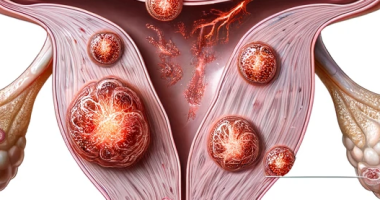Cerebrospinal fluid fistula
General information
The cerebrospinal fluid (liquor) fistula of the base of the skull is a canal of traumatic or infectious origin through which cerebrospinal fluid leaks out. Despite the seriousness of this pathology, its clinical picture does not have specific signs. The release of liquor most often occurs through the nose or tympanic membrane. Colorless released liquid is similar to the manifestation of allergic or vasomotor rhinitis. At the same time, the sense of smell and hearing may be preserved. Liquor fistula can be distinguished from a runny nose by some signs: the dependence of the outflow on the position of the head, the absence of irritation on the skin when the secretion enters, and headaches in periods when the flow of liquor stops.
The most common cause of liquor fistula is head trauma. In addition, liquorrhea can begin delayed after surgical treatment and medical manipulations, against the background of meningitis, as well as spontaneously (without the possibility of associating the development of pathology with any factor).
Classification of skull base liquor fistulas is based on the following criteria:
- Depending on the cause of occurrence (posttraumatic, postoperative, spontaneous);
- By localization (uni- and bilateral);
- By the time of onset (early, delayed);
- By number (one fistula, two or more);
- Depending on the clinical course (uncomplicated and complicated).
Symptoms
The main symptom of a cranial base fistula is cerebrospinal fluid leakage. If the pathologic process occurs after a brain injury, the liquor may ooze with an admixture of blood. A dull headache may occur due to a decrease in skull pressure. If, for some reason, the intracranial pressure increases, the pain subsides, but the flow of liquor increases.
In some patients, it is possible to detect mental disorders manifested by asthenic and emotional-personal syndrome. The asthenic syndrome is manifested by rapid exhaustion, fatigue, decreased attention and memory, and deterioration of mental activity. Emotional and personal – limitation of initiative, reduced criticism to a biased assessment of their condition, apathy, memory impairment. Sometimes, due to cerebrospinal fluid flowing into the respiratory tract, coughing may occur, and difficult release through the tympanic membrane causes hearing loss.
Additional Symptoms:
- nausea and vomiting;
- dizziness;
- bleeding;
- hearing impairment;
- photosensitivity;
- the rigidity of the back of the head;
- palpitations;
- hyperacusis;
- sleep deterioration;
- loss of consciousness and others.
Sometimes, an actual migraine is preceded by pain in the neck or between the shoulder blades that lasts from a few hours or days to 2 to 3 weeks.
The outflow of the liquor is not as noticeable in the recumbent patient, but in the standing position, intolerable headaches quickly occur, as well as nausea, vomiting, visual impairment, and other reactive conditions.
Diagnosis of the disease
A liquor fistula can be suspected if clear fluid is flowing through the nose or out of the ear. Its amount increases when the patient’s head is tilted forward and coughing, and liquor flows when pushing and sudden movements. Further diagnostic tests will help to confirm the diagnosis:
- Sample fluid test to determine if it is liquor or pure exudate from the nasal mucosa.
- Magnetic resonance or CT scan of the brain can be used to view the “hole” through which the liquor flows.
The first stage of the examination is a detailed collection of anamnesis, which involves analyzing the patient’s complaints about the strength, frequency of pain, and dynamics of sensations when changing position. This is a key moment in the initial diagnosis.
An MRI of the patient’s back and head is performed as part of the hardware examination. Highly qualified doctors also perform hardware examinations such as ultrasound, CT-myelography, infusion test, and myelography to detect even the smallest hole in the dura mater of the spine.
Treatment of liquor fistulas
The first stage of surgical treatment is the application of one or more epidural patches. This procedure, performed by invasive neuroradiologists, takes a fairly short time and is sufficient to cure the liquorrhea in most cases.
Surgical treatment of liquor fistulas of the skull base is performed in cases of ineffective conservative treatment, recurrences, and complicated courses (meningitis, encephalitis).
General anesthesia is used. If the defect is located in the sphenoid or ethmoid bone of the skull base, plastic reconstruction is performed by subfrontal access (uni- or bilateral) through the space under the dura mater. In case of large size or localization of the liquor fistula in the area of the frontal sinus, penetration directly through the dura is performed.
After accessing the fistula, the condition and severity of the abnormalities in the space under the dura mater are examined and assessed. Then the dura mater is directly performed using artificial materials or autografts (the patient’s own tissue). At the end of the operation, the frontal sinus is closed, and the scalp is fixed. The sutures are removed after 6-7 days.
Modern surgical methods allow the repair of liquor fistulas of the skull base with minimally invasive endoscopic transnasal access.
All these treatment options are available in more than 330 hospitals worldwide (https://doctor.global/results/diseases/cerebrospinal-fluid-fistula). For example, Skull base surgery can be done in 10 clinics across Turkey for an approximate price of $12.6 K (https://doctor.global/results/asia/turkey/all-cities/all-specializations/procedures/skull-base-surgery).
Postoperative period
After reconstructive surgery, strict adherence to bed rest for 10-15 days is necessary. The patient may be prescribed antibiotics in the first week after surgery to avoid infectious complications.


